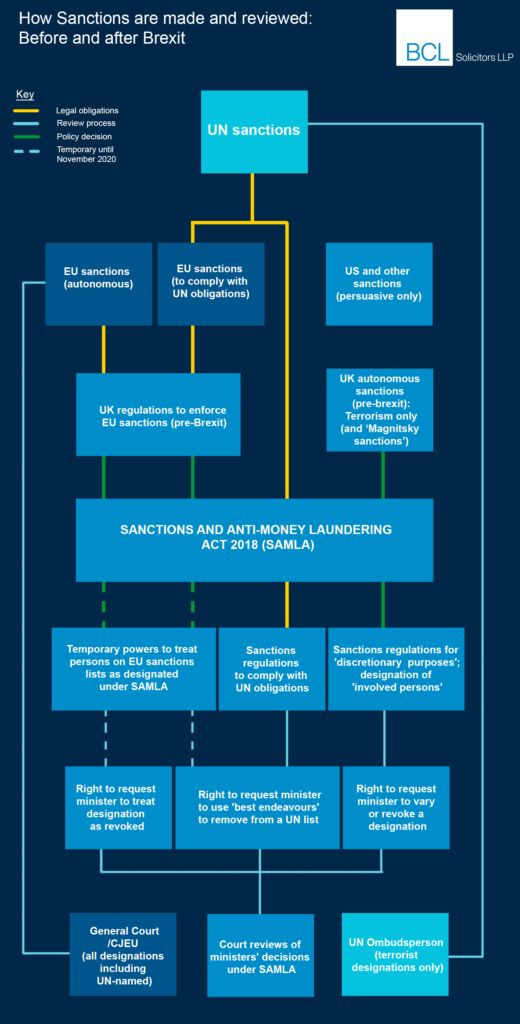BCL partner John Binns gives a visual overview of how sanctions are made and reviewed, as part of his 'Sanctions and Brexit' series of articles.
This diagram shows the complexity of the UK's sanctions framework as it transitions from a pre-Brexit to a post-Brexit world.
Some key points:
- The UK's membership of the UN is a constant: post-Brexit, we will continue to implement some sanctions to comply with UN obligations.
- The left half of the picture shows the relationship between UK and EU sanctions, before the 2018 Act and after it (the latter on a temporary basis).
- The right half of the picture shows those aspects of sanctions that are independent of the EU, including other countries' sanctions (eg the US), domestic terrorism, and 'Magnitsky' sanctions.
- The bottom part of the picture shows the rights of 'designated persons' to challenge the effect of sanctions on them. They vary according to the legal basis of the designation itself.
- The very bottom line shows the ultimate remedies to those persons in the EU and UK courts, and to the UN's Ombudsperson. In a post-Brexit world, all three may be relevant to the same person.
The principal aim of the 2018 Act is to ensure that this complexity does not affect those who have to comply with sanctions, although there is the potential for divergence in the future.

The content of this article is intended to provide a general guide to the subject matter. Specialist advice should be sought about your specific circumstances.

